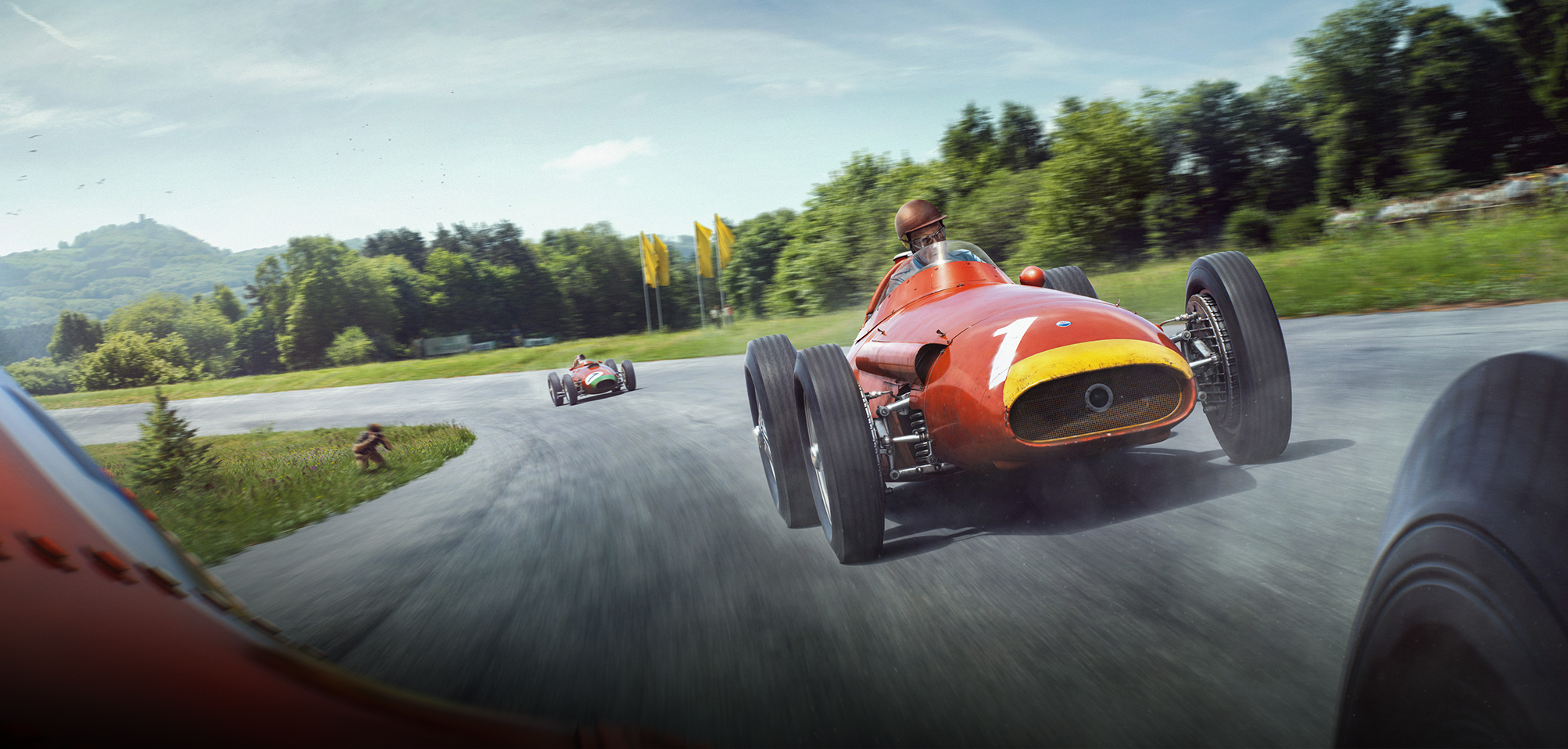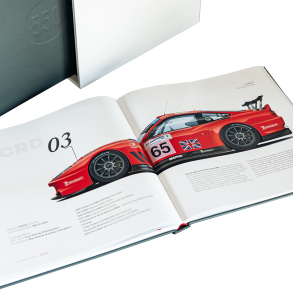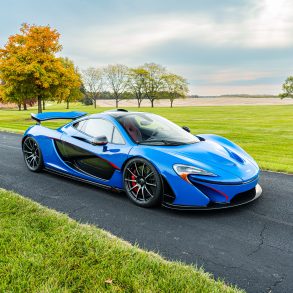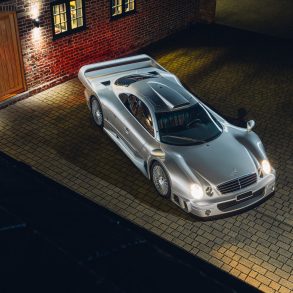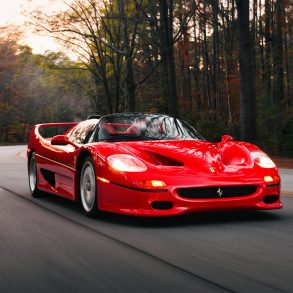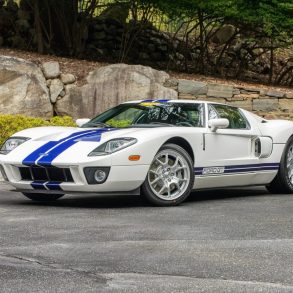Formula 1 Racing Artists
The history of Grand Prix Motor Racing through the lives of its greatest drivers, people and events with a special focus on the history of Formula 1.
Note: Where noted the images used in this article are from the motoring art database as compiled by Tony Clark and Motoring Art Info. Please feel free to contact Mr Clark if you wish additional information at http://www.motoringart.info/index.html
Artist Gallery – F. Gordon Crosby
Crosby’s most cherished paintings went beyond the mere recording of events. Within their borders the careful viewer could experience what it actually meant to fight for control of these monstrous machines in the early days of the automobile, their long, high bonnets masking the threat of power lying just beneath a thin skin of metal. This was his favorite period, one that had lasted too few years in his opinion. The period marked a time when a car was something special, its drivers to be envied and the best of them judged heroic. He would long for these days later in his life. In a 1938 issue of The Autocar he is quoted as saying that cars were becoming “…eggs on wheels, with only the driver’s head showing”.
It was said that he often did not actually witness the subjects in his paintings relying instead on the descriptions of others and his own mind’s eye. Having no formal training save for “life” classes taken after the start of his professional career, Peter Garnier in his book on the Art of Gordon Crosby stated that Crosby had crossed the line separating an illustrator from the artist.
There is no record of his actual birth date in 1885. Of his death in 1943 there is more known as he died from his own hand unable too overcome the depression caused by his failing health and the loss of his son in combat, shot down flying a P-51 over the English Channel in 1942. Between these two dates Crosby began his career as a draughtsman for Daimler. Here he came into contact with Sammy Davis, Ludlow Clayden and a host of others who would later work with him at one time or another at The Autocar. This legendary journal was a pioneer in automotive art and the use of perspective drawings of their mechanical workings. This lifetime partnership resulted in between 300-400 individual works including some of the most valuable automotive art in existence.
When making his annual visit to the Paris Salon with W.F. Bradley, he would quietly settle down on his shooting stick, making simplified, easily understood mechanical sketches, indifferent to his surroundings as though he were seated at his desk at home. Stand attendants would look with suspicion upon this unruffled Englishman who calmly put on paper the details of their new models about to be shown to the public. The less important the attendants, the more officious they were – and, after verbal protests, to which Crosby remained completely and utterly indifferent, they would hurry off and seek a policeman. But, since there was nothing illegal in making sketches in the Grand Palais, however unusual the practice at the time the Law usually shrugged its shoulders and looked on in wonder and admiration. Peter Garnier in the Art of Gordon Crosby








Artist Gallery – Alfredo De la Maria
Alfredo De la María was born in Uruguay in 1945. De la María studied art and architecture at the Bellas Artes School, in Montevideo. At the age of 18 he served as an illustrator of politics and sporting events for a leading newspaper in Montevideo. In 1961 he conducted his first exhibit of equestrian paintings in Punta del Este City. His studies about Polo are legendary in Uruguay. Additionally his paintings of naval and aviation subjects were also much in demand. In 1966 De la María left for Europe where he settled in Paris for the next three years. Returning to Montevideo for a short time he traveled to Argentina, to take a position with an important publishing company in the city of Buenos Aires. There he created illustrations for the covers of the many major magazines including Automundo, Parabrisas, El Tony and Dartagnan.
During this time he became totally involved in automotive art, and in 1989 he made the first of his many exhibits at the Buenos Aires Classic Cars Club. In a short time, his paintings were known not only in Argentina but also in much of the outside world. His paintings were exhibited at most of the important automotive shows such as Pebble Beach, Retromobile and Cavallino.
What is apparent when looking at his artwork is the fact that these are the work of a very talented painter who in his use of oils combined with his impressionist paintbrush brings comparisons with legends of the automotive art such as F. Gordon Crosby and Walter Gotschke. Often the cars appear to swerve by the viewer in a crash of sound. The maturity of his style with nothing over-painted in addition to their dramatic realism takes his artwork above the current generation of artists.
For additional information contact: Alfredo De la Maria . He maintains his own website at www.delamaria.com








Artist Gallery – Carlo Demand

At
His first published drawing was a charcoal for a Frankfurt newspaper in 1938. It featured a Mercedes W-154 Grand Prix Car. Famed German artist/illustrators, Hans Liska and Theo Metejko, served as Carlo’s most profound influences. Their work was easily accessible in Germany’s most popular weekly, Berliner Illustrirte Zeitung (BIZ). The frenzied interaction between man and machine best illustrated in their detailed charcoal drawings characterizes the work of all three. Carlo’s library contained numerous technical reference books but only four artbooks: Das Theo Metejko Buch and three Hans Liska sketchbooks. Carlo was drafted into the military in 1942 and served the German army in Frankfurt, Poland and the western front. He was captured and finished the Second World War in the French Army.
After the war he received a position with the art section of the U.S. Army Recreation Service, part of the Army Corps of Engineers. He rose to chief of his section and became a naturalized American citizen in 1951. (In 1947, he had married wife Margaret,a Louisiana native.) Carlo retired from the service in 1972. In his off-duty time, Carlo created commercial art and illustrations for book covers, magazines and newspapers. By 1972 he was doing this free-lance work for major multi-national companies. Carlo continued to work and paint 10 to 14 hours a day for the rest of his working life. Carlo’s corporate clients included Daimler Benz, Volkswagen, Ford, Volvo, Auto-Union, Renault, Victoria, Texaco, Veedol, Dunlop, Zeiss Ikon, Wrigley, and Coca-Cola. Most automotive enthusiasts have seen his work in Motor Trend, Playboy, Flug Review, Sports Car Illustrated, Hobby, and Der Spiegel. He created six covers for the German edition of Mad magazine; subjects included Ronald Reagan, John Travolta, Leonard Nimoy and Abba. Eleven hardcover books have been published with Carlo as exclusive illustrator. His work usually complemented a narrative written by him or others. Perhaps his most famous work is The Big Race, published in 1955. Carlo did 128 charcoal drawings to illustrate the history of automobile racing from 1894 to 1955. Subsequent books were on motor racing, airplanes, trucks, dirigibles, tanks, paddle-wheel steamers, motorcycles and the Mercedes car. The most popular of the books has been Conquerors of the Air: The Evolution of Aircraft, 1903-1945.
Carlo was a founding member of the Automotive Fine Arts Society and routinely exhibited at Pebble Beach at the time of The Concours d’Elegance. He has also shown at Meadowbrook and numerous one-man shows, primarily in Europe. His work is in numerous museum, public and private collections. The bulk of Carlo’s work has appeared in print. His 11 hardcover books contain 2058 original images. Carlo Demand remains one of the best-documented automotive artists ever.
Note: Biography provided by Mark Moskowitz MD







Artist Gallery – Walter Gotschke
Walter Gotschke was born on the 14th of October 1912 as the sixth of seven children to a father who was a master blacksmith in Bennisch, then a part of Austrian Silesia. From an early age he drew obsessively, first the animals and farm implements that were all around him. At the age of eleven Gotschke saw his first car parked in the village where he lived but to the young boy it may as well have come from outer space. Since nobody in town owned a car he had draw from memory the few cars that happened to pass through town.
Gotschke studied architecture in Brno, Czechoslovakia, and while attending classes he attended the nearby Ecce Homo Hillclimb, producing sketches for the local paper. In 1930 he submitted a poster design in a local competition based upon creating publicity for the upcoming Masaryk Grand Prix. Gotschke’s design featured a bright red Maserati. It was judged the winner of the competition and the resultant poster proved so widely popular that he won newspaper commissions to provide action sketches on race day.
Gotschke went to work for Mercedes-Benz in 1938, producing posters and illustrations depicting the works team’s various victories. During the war he served as a war correspondent/artist and several German magazines used his work to depict scenes of motorized warfare. After the war he was for a short time a American POW before becoming one of the millions of displaced persons subsisting as a refuge in the Austrian Tyrol. He spent time working on a farm where he sketched the animals in pastoral scenes, later selling some of the work to Innsbruck newspaper publishers, who offered him a job as illustrator. In 1949 he returned to Stuttgart and Mercedes, but this time working as a freelance artist. He continued to focus on motor racing and his illustrations appeared in such prestigious magazines as Automobile Quarterly, Road & Track, Sports Illustrated and Auto, Motor und Sport. Unfortunately his eyesight began to fail and the last years of his life were spent in blindness and on the 28th of August 2000 he died.
For More See The Art of Walter Gotschke







Artist Gallery – Bryan De Grineau
Bryan de Grineau was born Charles William Grineau on the 11th May 1883 and was the son of a well known illustrator and caricaturist Charles Grineau, who used the pseudonym Alfred Bryan. At the age of twenty-five de Grineau who had studied art under his father gained his commission through an automotive magazine, The Motor at the French Grand Prix at Dieppe. The early pen and ink drawings of de Grineau were very similar to that of his father and resembled the printing processes of the time. Most magazine illustrators had graduated from line engraving and wood block technique. 
Some 237 drawings by him from his archive are held by the Imperial War Museum. He went on to cover such notable events as the 1953 Coronation, as well as this Royal Wedding in 1947. Several of de Grineau’s paintings would serve as the cover art for the Hornby Book of Trains series.


It was said that de Grineau was a considerable personality and very good company and Roger Walkerley, who was the Sports Editor of The Motor and spent many seasons covering races with him recalled many happy times with the artist. On one occasion they checked into a Brescia hotel to cover the Mille Miglia and found cigars and champagne awaiting them. Eventually, the penny dropped that “Bryan” had been mistaken for “Baron” when the hotel was being booked. In 1936 de Grineau left The Motor on the grounds that the International London News paid far higher rates. During this period de Grineau also did some fantastical artwork for Modern Wonder a weekly youth’s magazine which dealt with mechanical and science inventions both of the present time and of the future.
Upon his death in May of 1957 an artist colleague wrote to the Times a couple of days later in order to expand on his obituary. It was observed that “The exigencies of the press, however demanded speed in his finished drawings too. From my memories of working with him I can testify to the extraordinary feats of concentration he performed in turning a few hurried notes into a complete and detailed picture to fill two whole pages in a matter of hours. The picture literally sprang to life as his charcoal moved with swift, nervous strokes over the paper. Such speed and accuracy sprang from a foundation of fine draughtsmanship and brilliant technique”.




Artist Gallery – Geo Ham



During the war he volunteered as a driver and was awarded the Croix de Guerre when he joined in the defense of a bridge at Garigliano, using the weapon of a wounded comrade and only retreating when he ran out of ammunition. After World War II, in spite of his previous fame, the “prince of speed” gradually fell out of favor, joining other famous painters as a victim to the new technology of colour photography. He died in 1972 during surgery and his funeral took place at the Chapel of Grace Val on the 30th of June.







Artist Gallery – Peter Helck
Peter Helck was born in 1893 and by the time of his death hehad seen automobile racing from its early beginnings on Long Island to the rear engined single seaters we are accustomed to today. He knew drivers from Louis Wagner to Mario Andretti and his paintings documented their exploits as none had before or since.
As a young boy he would garner rides with race car driver Al Poole testing the latest cars from Simplex. The first race that he attended was the 1906 Vanderbilt Cup on Long Island. He grew inspiration from legendary French artist Edouard Montaut who’s exaggeration of speed leant his work a sense of super realism. While an art student in New York he would spend many a lunchtime gazing at all of the wonderful showroom displays along that city’s automobile row. His first published work was for the Brighton Beach Motordrome. Commissions for the Sheepshead Bay Speedway soon followed.
In time Helck worked for most of the major publications of the day including The Autocar through which he traveled to England and the continent. While there he witnessed major races in France and Italy. In the 1930’s he was commissioned by the Sinclair Oil-Company to create a five paneled map. The result was a portfolio of lush service station scenes which monumentalized Sinclair and the idea of driving for pleasure. Helck himself has estimated that he created more than 600 racing sketches, drawings, and paintings that are owned by both private individuals and museums.
In 1941 “Old 16”, arguably America’s most famous race car, passed into the ownership of the one remaining man who could fully appreciate the drama and history caught up in the big gray car – Peter Helck who immortalized the Locomobile race car in one of his greatest paintings. The big Loco still carries the original gray paint and racing number from the 1908 Vanderbilt race – Helck had promised both drivers, Tracy and Robertson that the car would never be “restored.” Upon his death it was bequeathed to the Henry Ford Museum.
Peter Helck was born in New York City in 1893. He studied art at the Art Students League in Manhattan and later studied in England with muralist Frank Brangwyn. From the 1920’s through the 1940’s Helck was very successful as a magazine illustrator and advertising artist. His commissions frequently were of industrial scenes, or featured cars, trucks and locomotives. During that period he also painted pictures of famous automobile races — having been an avid fan of the sport since childhood. In 1944 he did a series of paintings for Esquire magazine in which he recreated the excitement of automobile races from the first decades of the 20th century. To his great satisfaction, these pictures proved very popular, and in the following decades he developed a large market for paintings of old cars. It is for this genre that he is mostly remembered today.
His death in 1988 at the age of 95 closed a window to the past when men drove huge monstrous machines at tremendous speeds over rock strewn roads. Beyond his paintings Helck authored many articles and at least two books, The Checkered Flag and Great Auto Races
Official Website: http://www.peterhelck.com/index.php





Artist Gallery – Roy Nockolds
Roy Anthony Nockolds was born in Croydon in south London, England on the 24th January 1911. He was the last of seven children; one of his brothers Harold F. L. Nockolds would later become a motoring journalist and author of the classic Rolls-Royce history, “Magic of a Name”. His mother Flora Mary van der Heyden was the great grand daughter of Dutch Baroque-era painter and inventor, Jan van der Heyden. His farther Walter Herbert Nockolds was a descendent of farmers who had originally come to Britain from the Frisian Islands.


When the war came to Britain in 1939 motor racing was halted. Nockolds initially found work with the RAF producing propaganda art. In 1942 he was tasked with improving the the camouflage of night fighters. He had noticed somewhat counterintuitive that a white owl is more difficult to see against a night sky than a dark bird. His idea was to paint the leading edge of the wing and underside of the aircraft white and the top of the aircraft black making it difficult to see from above and below. He prepared a painted model of a De Haviland Mosquito aircraft which was transferred to a full sized plane, resulting in the whole of 151 Mosquito Squadron being converted to the new scheme within days. He also investigated altering the appearance of the Typhoon fighter; due to its similarity to the German F.W. 190, several Typhoons had been shot down in error. Because of the specialist work he had been doing for the Ministry of Information (MOI) he was designated for deferred service but at the end of 1942 he was called up into the RAF as a Clerk. By 1943 he had been posted to the aircraft research station at Farnborough where he had civilian status. This gave him sufficient freedom of movement to continue the propaganda paintings and in his spare time accept commissions to supplement his income. He continued his work on camouflage of aircraft, particularly bombers, but also put forward his ideas on giving confusion to the enemy about the line of flight by trying with paint to alter the apparent wing shape.
Nockolds never got what he considered his due recognition for his work on aircraft camouflage. The return of motor racing and the growth of private motoring after the war resulted in more motoring art work together with regular aviation commissions and in 1949 he was accepted into the Royal Academy. Nockolds was married in 1948 to Elizabeth (Tina) Ingram and their marriage resulted in two daughters. He was also working part-time for The Motor magazine and was lent a Daimler motor car to travel through the continent attending various races including the 1949 Grand Prix at Monza.

Nockolds took a keen interest of the Brooklands society which was founded in 1967 to foster the memory of the race track, cars and personalities and to create a full-time museum. He was an early Committee Member and chairman from 1976 to 1978 only resigning with the onset of ill health. In 1959 he helped organize the first exhibition of aviation artists under the guise of the ‘Kronfield Social Club’, these beginnings led to the Society of Aviation Artists. Nockolds continued to produce a wide range of artwork until his death after a short illness on the 7th April 1979.






Artist Gallery – Rob Roy
Rob Roy, a pseudonym of his name Robert de la Riviere was born in Mont-de-Marsan, France on October 3rd, 1909. His father a successful painter who specialized in horses was one of the first owners of an automobile in France, a De Dion-Bouton. Growing up in this environment nurtured Roy’s twin passions, drawing and automobiles. In 1926 he saw his first major race, the 24-Hours of Le Mans. It was love at first sight and Rob Roy became a devoted chronicler of this famous endurance race. After serving in the military he received his first commission covering the Bordeaux GP of 1930 for the French newspaper La Petite Gironde. His work would later appear on the covers of Moto Revue, Action Auto and L’Equipe.









Artist Gallery – Michael Turner

He is known for his accurate detail regarding the cars as well as the track. Yet his paintings cannot be described as being in anyway antiseptic. On the contrary there’s a sense of honesty in his work that emotes the respect that the artist has for his subject matter. In order to capture the decisive moment Turner uses a camera rather than a sketchpad feeling the latter to be too intrusive. Today Turner receives commissions from around the world including many from well-known motor racing personalities.
To date, Turner has had six books of his paintings published – featuring aircraft of the Royal Air Force, Formula One Motor Racing, Aircraft of the Luftwaffe, Aviation Art, Monaco Grand Prix and Motor Sport Art.
To purchase his artwork please visit Studio 88 Limited









